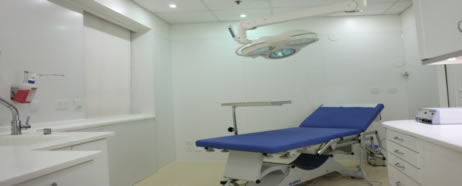 | Central Vascular Clinic | | 趙啟明醫生醫務所 Dr. Leo K.M. CHIU |
|  |
|
|
|
|  |
What is central venous access ?
Central veins are large veins inside the chest directly connected to the heart. Compare with the peripheral veins of the arms, they are much larger in diameter and has a much higher rate of blood flow. Medicine that is too concentrated or irritating to the peripheral veins may be administered directly into a central vein and become diluted very quickly. Central venous access provides for frequent intravenous infusion without the repeated painful needle sticks and surrounding inflammation. It makes the months of chemotherapy much less painful and less traumatic.
Use of central venous access
- Deliver chemotherapy in cancer patients
- Deliver coagulation factors in patients with haemophilia
- Deliver antibiotics to patients requiring them for a long time
- Deliver intravenous nutrition at high concentration
- Withdraw blood sample for test
Type of long-term central venous access
- Partially implanted catheter
- Totally implanted catheter with a port
What is an injection port?
The major users of implanted port are oncology patients. Most ports are placed below the collarbone on the chest wall by a vascular surgeon. The port provides a point of entrance into the central vein for infusion of medicine or withdrawal of blood. It is a self-sealing silicone bubble for repeat needle insertion. As silicon is a very inert material, rejection and allergy are not an issue.
.jpg)
Implantation of injection port
After local anaesthesia the central vein is punctured and a small incision the “insertion site”is made around the puncture. A tunnel is prepared under the skin from the “insertion” site to another incision called the “exit” site. A long silicon tube “a catheter” is pulled from the exit site through the tunnel to the insertion site and threaded into the central vein. A port, of the size of a 5 dollar coin, is then connected to the catheter and buried beneath the skin. It appears as a bump under the skin. Patients hardly have any discomfort and can resume normal activity right after the implant.
.jpg)
How to use the port?
Feel for the bump and locate the portal, then apply anaesthetic cream to numb the skin. Straight aseptic technique is used. A non-coring needle (Huber Needle) is inserted through the skin, then the septum of the port and into the port reservoir. The injection fluid flows from the reservoir through the catheter and into the patient's vascular system. The tip of the catheter is placed to a large central vein for maximum dilution of the infusate.
.jpg)
Advantage of injection port over indwelling line such as Hickman® line
- Do not affect daily activities
- It is completely internal so swimming and bathing are not a problem.
- Accepatable in appearance
- Totally implanted underneath the skin and require no special maintenance
Risk of central venous access
- Pneumothorax - Attempts to gain access to the central vein can injure the lung, leading to air being trapped between the lung and the thoracic cage (pneumothorax). If it is large, chest tube need to be placed to remove the trapped air. In experienced hands, the incidence of this complication is about 1%.
- Arterial injury - Artery and vein are close together and the artery can be inadvertently punctured. This usually leads to a subcutaneous hematoma.
- Infection - infrequently severe infection require the catheter to be removed
- Thrombosis - blood clot in the catheter may block the device. To prevent clotting the device is flushed with saline and heparin
- Mechanical failure –though extremely rare, it is possible that part of the system could break and become lodged in the circulatory system.
|
|
|
|
|
|